Art Carpenter: 1920-2006
Self-taught woodworker and influential West Coast furniture maker dies at 86
Art Espenet Carpenter, a pivotal figure in the woodworking community whose original work helped inspire the sculptural style of West Coast furniture design, died at his home in Bolinas, Calif. He was 86.
Carpenter suffered a heart attack at his home in the secluded seaside community north of San Francisco where he lived and worked for decades. He had been battling with heart disease for several years, said his son Tripp Carpenter, a woodworker in nearby Mill Valley, Calif., who continues to run the family shop.
Carpenter was never formally trained in woodworking, but that worked to his advantage, and his free-spirited approach to the craft set him apart. After learning to make hand-cut dovetails, Carpenter couldn’t justify the time involved and invented a technique to cut dovetails with a router and a shopmade jig. And his impatience with fitting drawers led to his technique for cutting drawers from solid wood with a bandsaw. This innovation was the precursor to the bandsawn box.
“He was an innovator,” said Tripp Carpenter, who began working in his father’s shop at the age of six. “He had no predecessor to copy. Everything he did was pretty new.”
Born in New York City in 1920, Carpenter earned a degree in economics from Dartmouth College, then served four years in the Navy during World War II. After leaving the Navy, Carpenter found inspiration in woodworking when he visited an exhibit at the Museum of Modern Art in New York that celebrated the good design of utilitarian objects. Soon after, he set off for San Francisco, where he bought a lathe and began teaching himself the craft. Just a few years later, his bowls were included in the same exhibit that first inspired him.
Carpenter didn’t like to consider himself an artist, and it wasn’t art that drove him to pursue woodworking as a career. He told Fine Woodworking in a 1982 interview: “I was no artist. I was no craftsman. But maybe I could make things anyway, things that might be considered beautiful.”
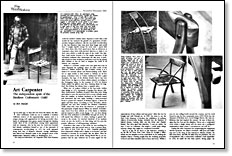 |
|
Download the 1982 Fine Woodworking profile and interview with Art Carpenter. |
Through the years, his one-lathe operation evolved into a fully equipped workshop, and Carpenter began developing his unique portfolio of furniture. It ranged from assemble-it-yourself kits to his sculptural pieces, such as the wishbone chair and his clamshell roll-top desk. His contemporary designs were so celebrated that his work was featured at the inaugural show of the Smithsonian’s Renwick Gallery in Washington, D.C., alongside the work of Wharton Esherick, George Nakashima, Sam Maloof, and Wendell Castle.
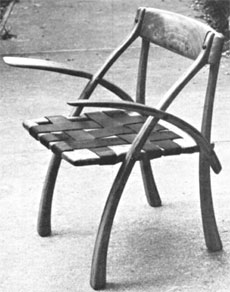
Despite this recognition, Carpenter remained a modest craftsman, and always designed his furniture with a similar approach. “I want what I make to be lived in and on and around. Anyone can make a $1,500 chair. But a $500 chair deserves its own accolades,” he said during his 1982 interview. “When you see a chair, you should say sit; when you see a table, put things on it… If you make something that says sleep, by God you’ve made a bed.”
A founding member of the Baulines Craftsman’s Guild (a disguised spelling of the town it is named for), Carpenter went on to teach and inspire as many as 200 woodworkers who apprenticed under him, according to his son. One of his students was Dave Keller, who developed the Keller Dovetail System, a router jig that was first inspired by Carpenter’s original shopmade tool.
He is also well known for his hand-built “Round House,” which was featured in Life magazine in 1966.
June 2, 2006
Matt Berger is managing editor of FineWoodworking.com
Fine Woodworking Recommended Products

Drafting Tools


Sketchup Class





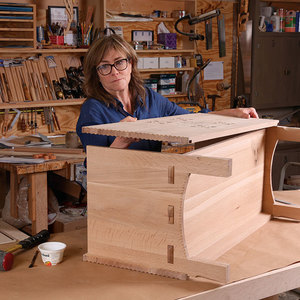
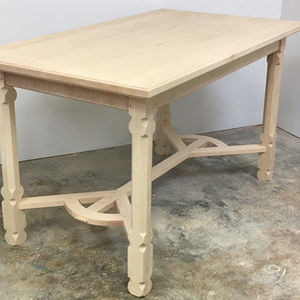





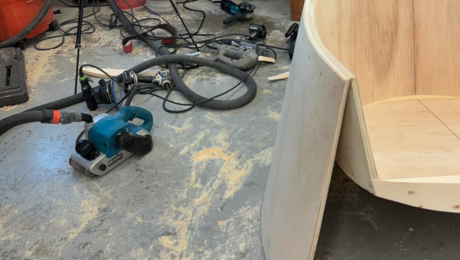
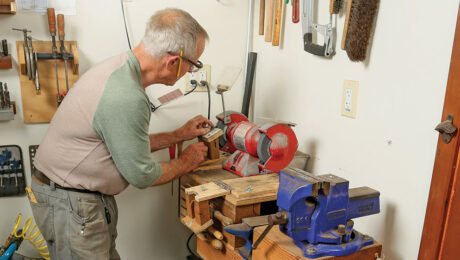








Log in or create an account to post a comment.
Sign up Log in